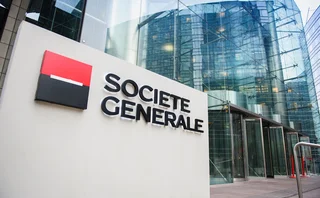
Moody's swaps bail-in bet splits banks and buy side
In the next crisis, ratings agencies believe derivatives are less likely to be bailed in than bonds, so they should be rated higher. One agency has already taken the plunge, but buy-side firms are wary and the eurozone’s resolution chief has warned it is not a safe assumption

Moody's Investors Service recently did something brave and far-sighted. Or, perhaps, reckless and wrong-headed. It will be hard to tell until the next time a big bank is staggering into the void. When that happens, the rating agency believes derivatives counterparties exposed to the bank are unlikely to lose money under new resolution rules. Senior bonds will be used to recapitalise the bank instead – a forecast that, for the first time, de-links the ratings for the two and sets derivatives
Only users who have a paid subscription or are part of a corporate subscription are able to print or copy content.
To access these options, along with all other subscription benefits, please contact info@risk.net or view our subscription options here: http://subscriptions.risk.net/subscribe
You are currently unable to print this content. Please contact info@risk.net to find out more.
You are currently unable to copy this content. Please contact info@risk.net to find out more.
Copyright Infopro Digital Limited. All rights reserved.
As outlined in our terms and conditions, https://www.infopro-digital.com/terms-and-conditions/subscriptions/ (point 2.4), printing is limited to a single copy.
If you would like to purchase additional rights please email info@risk.net
Copyright Infopro Digital Limited. All rights reserved.
You may share this content using our article tools. As outlined in our terms and conditions, https://www.infopro-digital.com/terms-and-conditions/subscriptions/ (clause 2.4), an Authorised User may only make one copy of the materials for their own personal use. You must also comply with the restrictions in clause 2.5.
If you would like to purchase additional rights please email info@risk.net
More on Markets
Why did UK keep the pension fund clearing exemption?
Liquidity concerns, desire for higher returns and clearing capacity all possible reasons for going its own way
How UBS sold off non-core equity assets at lightning speed
More than 40 auctions have been completed since Credit Suisse acquisition, with a little help from a T-Rex
‘Street Fighter’ Sef RTX grows in interdealer swaps market
Focus on functionality and fees helped volumes on start-up venue from Cawley and Jonns jump fivefold last year
Isda to finalise drafting updated FX definitions this year
New definitions on disruption events and fallbacks are core focus
Treasury clearing timeline ‘too aggressive’ says BofA rates head
Sifma gears up for extension talks with incoming SEC and Treasury officials
SG looks beyond equity derivatives in new markets push
French bank aims to expand fixed income business to achieve “more stable” revenues across asset mix
Does no-hedge strategy stack up for mag seven mavericks?
At Amazon, Meta and Tesla, the lack of FX hedging might raise eyebrows, but isn’t necessarily a losing technique
HKMA’s renminbi repo plans boost hopes for onshore access
Market participants optimistic that new provisions for offshore repos of onshore bonds is first step towards mainland access







